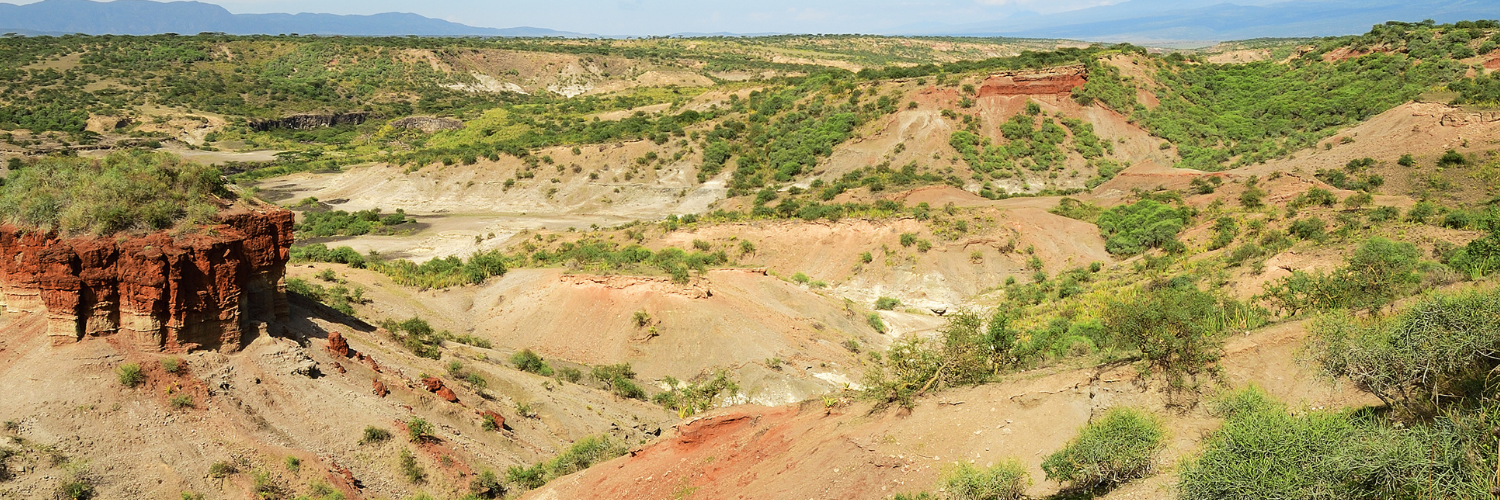
It is part of a steep sided ravine (50 km long) in Tanzania’s Ngorongoro/Serengeti Plain (part of the Great Rift Valley), and is world famous as the “cradle of mankind”.
On this unique location water, weather and time eroded a whole mountain – and kindly left a gigantic block in the centre. This block clearly shows four visible layers of volcanic deposits – each formed over hundreds of thousands of years; a feast for all archaeologists. You just have to dig out some bones, sort them properly and there you are: The history of 2.6 million years of human evolution.
Actually, it was a German entomologist, Professor Katwinkel, who discovered the gorge back in 1911, while he was looking for butterflies. He found some fossil bones, which caused great interest in Europe. Following up on those previous explorations, the English scientist couple, Dr. Louis Leakey and his wife Mary discovered early humanoid remains in 1959, after almost 3 decades of searching. The finds – a jawbone of the skull of Australopithecus (Zinjanthropus Boisei) also called ‘The Nutcracker Man’, who was obviously a vegetarian and lived around 1.7 million years ago and looked a bit like a cross between a monkey and a human. This was the first conclusive evidence that hominids have walked the earth almost 2 million years ago and that they had obviously evolved in Africa.
A year later, the skull and bones of ‘Handy Man’ (Homo Habilis) were found. He had a larger brain and ultimately he gave rise to modern man, Homo Sapiens.
This find of early man, significant though it was, has been surpassed by Mary Leakey’s find at Laetoli, 45 km to the north of Olduvai in the year 1979. She discovered a 27-metre long “Hominid Track way”, the perfectly preserved foot prints of three humanoids, possibly a man, woman and child. These footprints were definitely made by “human creatures” and were preserved for all time as they walked upright in the fresh volcanic lava ashes of Sadiman (one of the Rift Valley volcanoes). The footprints date back 3.75 million years; meaning these footprints pushed back the beginnings of the human race even further. The actual footsteps were reburied and a plaster cast is now on display in the tiny, but very well documented site museum at the top of the gorge.
This museum you are free to visit with your family. It holds displays of copies of some of the finds (most of the originals are in the Museum of Natural History in London and in the National Museum of Dar es Salaam) as well as pictures of what life was like for Olduvai’s earliest inhabitants. You can go down a bit into the gorge to explore the digging sites and there will usually be a guide/archaeologist to show you around.